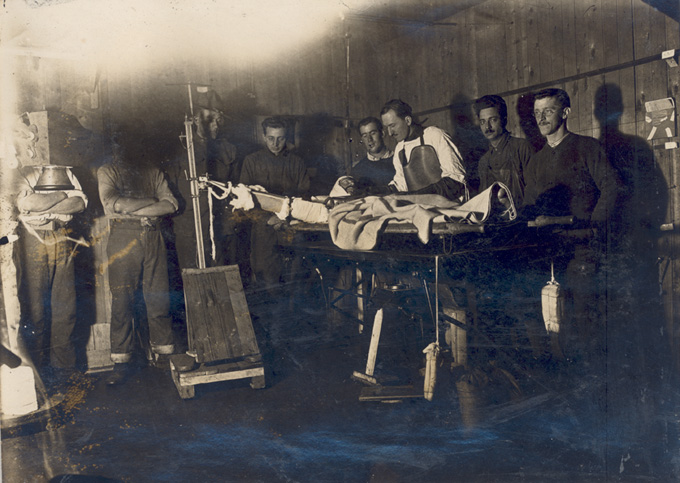
 |
|
| Though Majidson describes this photo as a patient waiting to be operated on, it better illustrates a patient being x-rayed by Capt. Edwin C. Ernst, roetgenologist for Base Hospital 21. The fluoroscopic table, designed by Capt. Ernst, was heralded for allowing patients to be X-rayed while remaining on the same stretcher they arrived on and for reducing the amount of radiation exposure to the examiner. Patients arriving at Base Hospital 21 were given X-ray examinations prior to their tent bed assignments whenever possible. Much suffering was avoided by examining the soldiers on their original ambulance stretchers, immediately upon their arrival from the casualty clearing stations. Unnecessary congestion of the wards was also prevented. Wounded soldiers were classified roentgenologically upon their arrival as follows: emergency cases (more seriously wounded soldiers requiring surgery, labeled “operation immediately”); less serious cases (requiring surgery at a later date, marked “defer operation”); trivial (lightly wounded soldiers immediately rerouted to other hospitals); and non-operative cases (British soldiers were sent home to England while French and American soldiers were routed to the south of France). Ernst is seen above in the white coat. | |